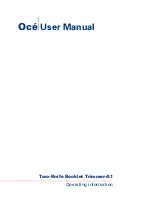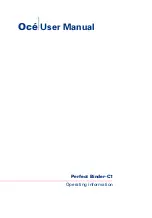
4 - The PatchMix DSP Mixer
Mixer Strip Creation
E-MU Digital Audio System
43
5.
Each analog input pair has its own Input Pad (-10dBV or +4dBu) which controls the
input signal range. Changing the I/O settings can add or subtract 12dB. Check these
settings if you cannot set the proper input level.
See I/O Settings
.
Making the Best Possible Recording
Making a good digital recording is easier than ever thanks to the high resolution 24-bit
A-D converters on your Digital Audio System. These converters are much more forgiving
than the 12-bit or 16-bit converters of the past. Even so, to get the best performance
possible, you'll need to follow a few basic guidelines.
First, whenever you input an analog signal to the Digital Audio System, make sure that
you're feeding the A-D converters with an optimum signal level. The quality of a digital
recording is directly related to the signal level you feed into the A-D converters. If the
analog input level is set too low, you lose resolution—if it's set too high, the A-D
converters will clip.
To measure the input level, simply add an insert meter to the channel strip in PatchMix
DSP. These meters are accurately calibrated to display 1dB for each bar on the meter.
You can enlarge the meter view by clicking on the insert meter in a strip and selecting
the “Effect” button at the top of the TV screen.
The “I/O Settings” in the Digital Audio System allow you to set the input levels to
-10dBV (consumer equipment level) or +4dBu (professional equipment level) for each
analog input. This control sets the overall input level to match your other gear, but to get
the best possible recording you need to fine tune the level further.
In order to supply the correct input level, you’ll need to adjust the output of your analog
source (electric instrument or preamp) so that the input level comes close to 0dB
without ever going over.
Play your input source signal while watching the insert meter in the strip. The signal
should go into the yellow area frequently, but never into the red. Adjust the level of your
source until you have a good level. If the signal is way too strong or too weak, you may
have to go back and adjust the I/O Settings.
Choose “-10” if the input signal is too
weak and “+4” if the signal is too strong.
Digital audio has NO headroom past 0dBFS (FS = Full Scale) and will “hard clip” if the
signal exceeds 0dB. Hard clipping sounds bad and will ruin your recording. Hard
clipping occurs because at 0dBFS, all 24 bits are turned on and the A-D cannot measure
any higher level. Analog tape, unlike digital, can be driven past 0dB, although with
some degradation of the signal.
The Digital Audio System includes Insert “Trim Pot” controls, but they adjust the signal
level after the signal has been digitized and will not recover any lost resolution. It’s far
better to set the input level correctly in the first place. Trim Pots can be used in
emergency situations if there's no other way to get a hot signal in, but they were
designed to adjust levels feeding effect plug-ins.
Summary of Contents for 1212M
Page 1: ...1820 1820 Owner s Manual Owner s Manual ...
Page 8: ...8 E MU 1820M 1820 1212M PCI Digital Audio System ...
Page 54: ...4 The PatchMix DSP Mixer Main Section 54 Creative Professional ...
Page 110: ...5 Effects E MU E Wire VST 110 Creative Professional ...
Page 116: ...6 Using High Sample Rates Overview 116 Creative Professional ...
Page 138: ...7 Appendix Internet References 138 Creative Professional ...
















































